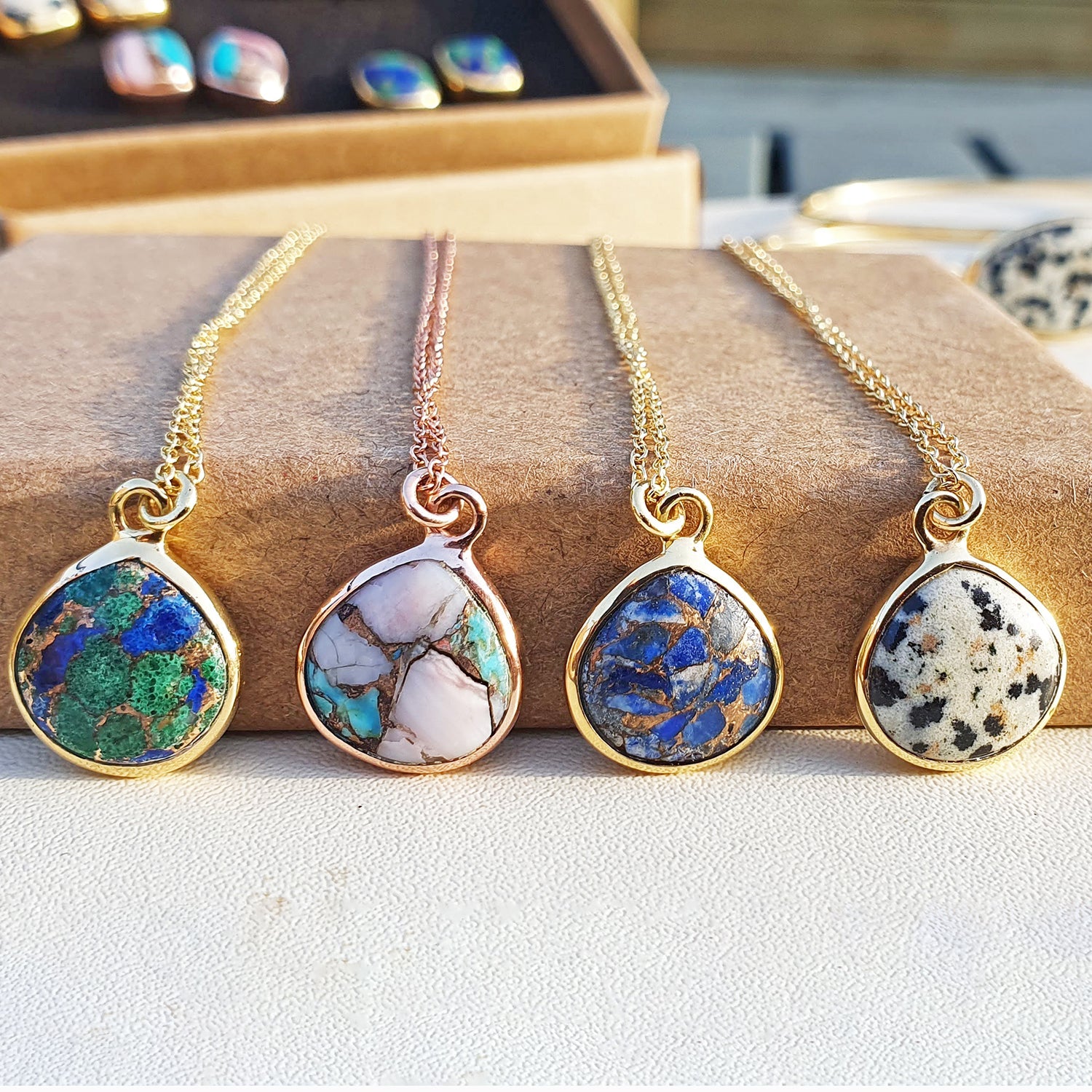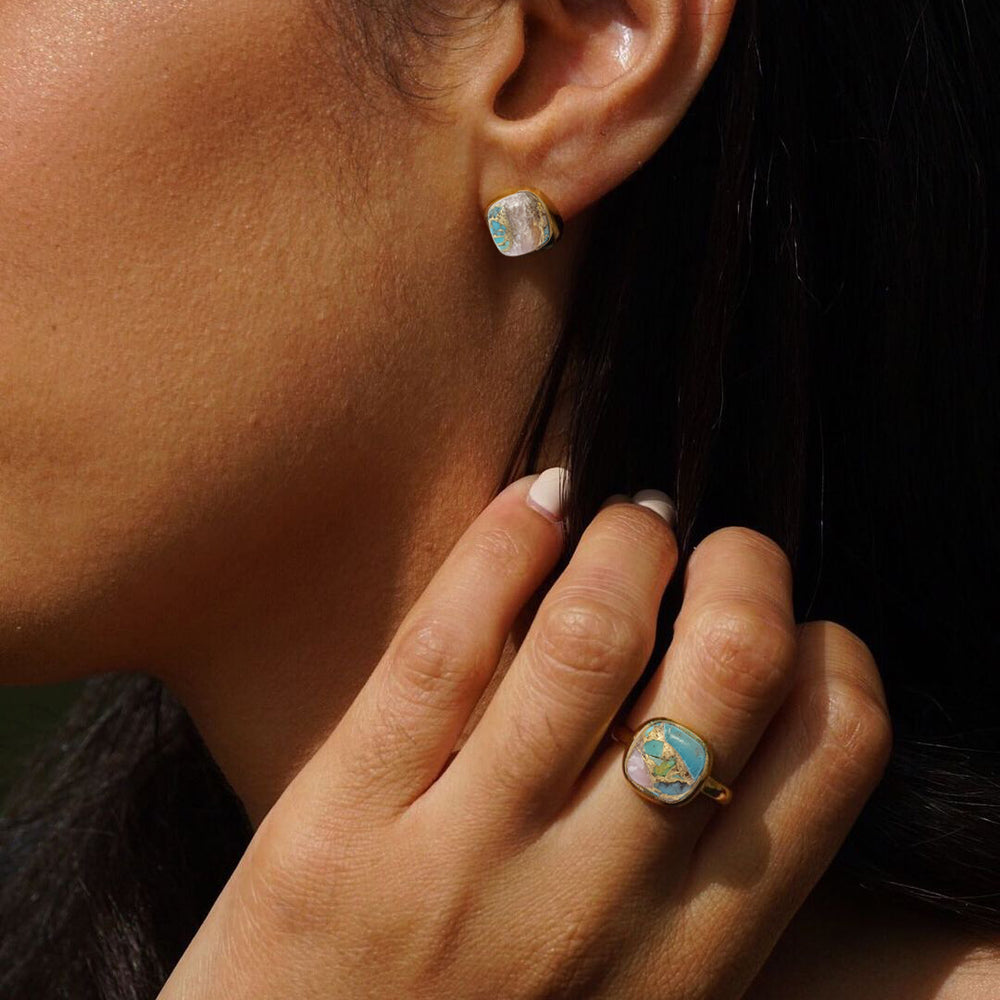September Birthstone Spotlight: The Beauty of Sapphire Jewellery
Sapphire – a gem that has captured our attention for millennia. It is one of the most recognisable and famous of the birthstones. This shape-shifting stone can actually come in a myriad of colours but is most known for its rich, blue variety. Read on to learn more about the meaning, history and particularities of sapphires.

The Meaning and History of Sapphires
The word “sapphire” comes from the Greek ‘sappheiros’ and the Latin ‘saphirus’ both meaning blue. The name is also associated with Saturn. In some languages, its name can be translated to ‘dear to the planet Saturn’.
Sapphires feature in many cultures and beliefs around the world. Many historic figures esteem sapphires: Helen of Troy is thought to have owned a large star sapphire, which was believed to make her desirable. The King Solomon believed his star sapphire, known as the Seal of Solomon, gave him power over spirits in the air, underworld and earth. Ancient Greek and Roman elites used sapphires to protect them from harm and envy.
Due to its famous blue colour, it has often been associated with the sea and the sky. Ancient Persian rulers believed sapphire was reflected in the sky. Sapphires were thought to have the colour of “a clear sky just minutes after sundown.” Clerics preferred sapphires. As they were linked with the sky, they were also linked with the heavens. Legend has it that the tablets the Ten Commandments were written on were actually sapphire. Sailors have long thought sapphires would help keep them safe at sea.
Royalty believed it would protect them from envy and harm. It is also often cited as a stone to protect against witchcraft. Sir Richard Francis Burton, an Oriental traveller, believed sapphires would give him good luck on his travels and referred to sapphires as his talisman. Another traveller, Marco Polo, delivered deep blue Ceylon sapphires to the Venetian court. Many large Ceylon sapphires found today in royal treasuries can be tracked back to Marco Polo’s travels.
In medieval times, sapphires were used to test fidelity; if the colour changed when worn, the wearer was thought to be unfaithful. This was often used by crusaders.

Where does sapphire come from?
Historically, sapphires have principally come from Myanmar, Sri Lanka, and Kashmir. Around 1881, a landslide in the Himalayas exposed masses of these blue crystals in Kashmir. Thousands of these large crystals were found in the following years. Mogok in Myanmar is also a hot-spot for sapphires, though the area is mainly associated with rubies. They are also found in other Asian and African countries as well as Montana in the United States.

The Properties of Sapphire
Sapphire is one of the four precious gemstones, along with rubies, emeralds and diamonds. It is the second hardest on the Moh scale, at 9. It is formed beneath the surface of the earth under immense pressure and heat from the mineral corundum. As it cools, it is colourless. When other minerals are mixed with it, it can turn many colours like pink, blue, yellow or green. The iron and titanium give the gem the famous deep blue colour. When corundum is turned red, it’s a ruby. One rare form is the padparadscha sapphire, a pink-orange stone known as “lotus blossom”. Though some sapphires naturally change colours under different lighting.

Sapphire– the September birthstone
Sapphire is the September birthstone, along with lapus lazuli. It is often seen as an emblem of power and strength, as well as good health, good judgement and even good eye-sight. Because of its resistance, the sapphire is a perfect stone to wear everyday. It is also often associated with heavenly powers, innocence, truth and peace. These associations and benefits to the wearer make it one of the most popular gemstones.

Mystical Properties of Sapphire
Sapphire brings gifts of fulfilment, joy, prosperity and beauty. It can also be a good luck charm for travelling. Particularly when travelling overseas. As sailors used to navigate by starts, it is also associated with astrology. It has often been used to ward off illness. In the Orient, due to their colour, sapphires were associated with Saturday. The blue colour represented wisdom and generous thinking. It is also often linked to heaven and religion. It can also banish evil spirits and guard against poison and snakes.

Interesting facts about Sapphires
- Recently, sapphires have grown more popular due to the 12 carat blue gem surrounded by diamonds in the sapphire engagement ring first worn by Lady Diana. Then given by her son to Kate Middleton, now Duchess of Cambridge.
- The colour ‘royal blue’ gets its name from the sapphires that royalty has always cherished.
- Napoleon Bonaparte gave Josephine a two stone sapphire and diamond engagement ring in 1796. It sold for nearly a million dollars in 2013.
- One of the most famed sapphires in the world is the “Star of India”, a sapphire of 563 carats, now house in the Museum of Natural History in New York.
- Star sapphires exhibit an optical phenomenon called asterism, where inclusions in the sapphire reflect light in the form of a star pattern.

Caring for your Sapphire
Because of their hardness, you do not need to be gentle when cleaning sapphires. Warm soapy water and a soft cloth are all that is needed to clean a sapphire. Though any fractures in the stone will weaken it considerably and mean it can breakdown from a strong impact. When storing, sapphires should be kept separate from other gemstones, as they are harder, they can scratch the surface of other gems easily.

Where to buy sapphire jewellery?
Sapphire jewellery makes a perfect gift for September babies. Virgos and Libras are lucky to have such a famously beautiful and prized birthstone. Its durability means it is great for everyday wear. It’s versatile enough to be paired with jeans for a casual look or something classier for a night out. You can personalise our birthstone necklace with a sapphire charm for a truly meaningful gift.





Leave a comment